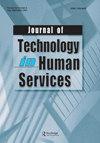从战斗到COVID-19 -使用虚拟现实管理创伤的影响
IF 1.5
Q2 SOCIAL WORK
引用次数: 5
摘要
摘要研究记录了利用虚拟现实(VR)在广泛领域进行评估和治疗的临床应用的疗效,包括疼痛、恐惧症和创伤后应激障碍(PTSD)。随着临床虚拟现实领域的成熟,重要的是要回顾其起源,并检查这些最初的探索是如何进展的,还有哪些差距,以及社区可以追求哪些机会。我们通过在这个领域的背景下反思我们个人的科学之旅来做到这一点。特别是,本文讨论了一个最初旨在为与战斗相关的创伤后应激障碍提供以创伤为中心的虚拟现实暴露疗法(VRET)的临床研究项目是如何发展起来的,以扩大其影响并解决更广泛的创伤来源。这些创伤来源包括性创伤以及在新冠肺炎疫情前线服务的急救人员和医疗保健专业人员的需求。我们概述了该领域及其总体趋势,讨论了我们研究议程的起源及其现状,并总结了即将到来的机遇,以及共同的挑战和经验教训。本文章由计算机程序翻译,如有差异,请以英文原文为准。
From Combat to COVID-19 – Managing the Impact of Trauma Using Virtual Reality
Abstract Research has documented the efficacy of clinical applications that leverage Virtual Reality (VR) for assessment and treatment purposes across a wide range of domains, including pain, phobias, and posttraumatic stress disorder (PTSD). As the field of Clinical VR matures, it is important to review its origins and examine how these initial explorations have progressed, what gaps remain, and what opportunities the community can pursue. We do this by reflecting on our personal scientific journey against the backdrop of the field in general. In particular, this paper discusses how a clinical research program that was initially designed to deliver trauma-focused VR exposure therapy (VRET) for combat-related PTSD has been evolved to expand its impact and address a wider range of trauma sources. Such trauma sources include sexual trauma and the needs of first responders and healthcare professionals serving on the frontlines of the COVID-19 pandemic. We provide an overview of the field and its general trends, discuss the genesis of our research agenda and its current status, and summarize upcoming opportunities, together with common challenges and lessons learned.
求助全文
通过发布文献求助,成功后即可免费获取论文全文。
去求助
来源期刊

JOURNAL OF TECHNOLOGY IN HUMAN SERVICES
SOCIAL WORK-
CiteScore
4.20
自引率
6.70%
发文量
6
期刊介绍:
This peer-reviewed, refereed journal explores the potentials of computer and telecommunications technologies in mental health, developmental disability, welfare, addictions, education, and other human services. The Journal of Technology in Human Services covers the full range of technological applications, including direct service techniques. It not only provides the necessary historical perspectives on the use of computers in the human service field, but it also presents articles that will improve your technology literacy and keep you abreast of state-of-the-art developments.
 求助内容:
求助内容: 应助结果提醒方式:
应助结果提醒方式:


